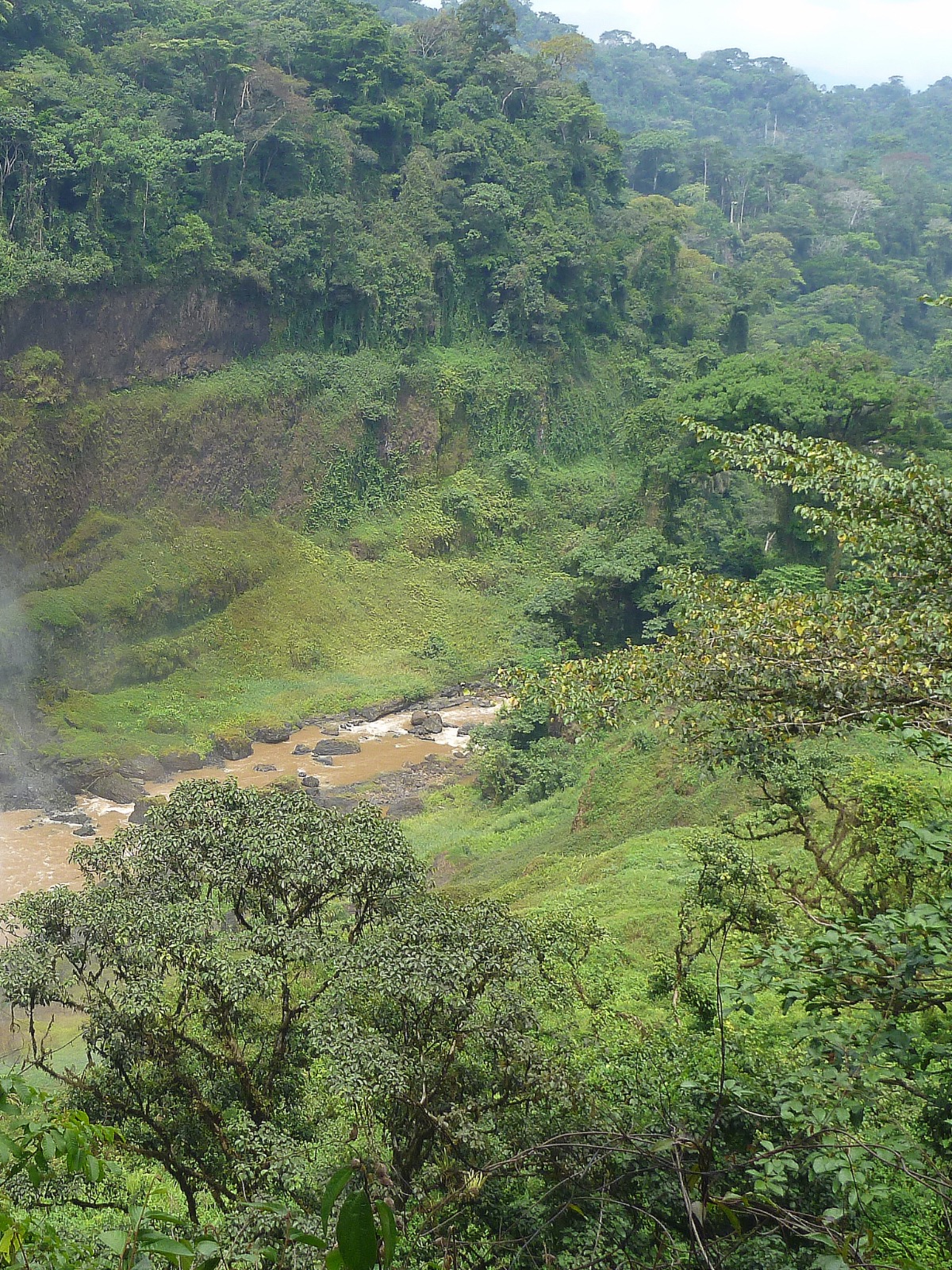
ENGLISH
Project
Human and Wildlife Conflicts in Central Africa
READ MORE ABOUT THIS PROJECT
Country:
CONGO (BRAZZAVILLE) CAMEROON
Author:

Jean Pierre Ndinga
CONGO BASIN RJF GRANTEE
An English summary of this report is below. The original report, published in French in Africa News, follows.
In Congo-Brazzaville and Cameroon, as in many other countries in the Congo Basin, the cohabitation of humans and elephants is anything but peaceful. NGOs and public authorities are now working together to find effective and, above all, sustainable solutions.
A solitary male in the Conkouati-Douli National Park. Image courtesy of Africa News.
Devastation of crops, attacks on humans... In Congo-Brazzaville and Cameroon, as in many countries of the Congo Basin, cohabitation between humans and elephants is anything but peaceful coexistence. NGOs and public authorities are now selling their jobs in search of effective, but above all sustainable, solutions.
In Cameroon, the problem arises in the localities of Campo, in the south of the country bordering Equatorial Guinea, and Messok-Ngoyla in the east. In recent years, these areas have been seen as epicenters of this conflictual coexistence between humans and wild beasts.
This is due to the animals of the Campo Ma'an and Nki National Parks, which abandon their natural areas to enter villages in search of food, destroying fields and plantations and sometimes even attacking humans.

As a not-for-profit journalism organization, we depend on your support to fund journalism that covers under-reported stories around the world. Donate today, no matter the amount, to become a Pulitzer Center Champion and get exclusive benefits!
Among the animals implicated are elephants, rodents including hedgehogs and primates including gorillas and guenons. As if the leaves and wild fruits were not enough, these animals, in order to meet their colossal needs for food, attack the crops of humans: bananas, cassava, cocoa trees, pistachios,....Almost all crops now end up in their voluminous stomachs.
Several factors are mentioned. The case of the increase in the animal population, the result of "successful" conservation, according to Nkouom Metchio Cyrus, municipal councillor of Ngoyla and the proximity to the parks. "This would push the animals out of the boundaries of protected areas to go elsewhere, especially in peasant plantations," says the local elected official.
Congo-PNCD: Noah or the ark of the new insurance?
The situation is the same in the Conkouati-Douli National Park (PNCD), in the department of Kouilou, in the extreme south-west of Congo-Brazzaville.
Here, the 30 or so villages in the districts of Madingo-Kayes and Nzambi struggle to live together with wild animals, including elephants. With an estimated population of nearly 1,000 individuals, pachyderms make incursions into human environments by ravaging their farms.
Attacks on humans have also been reported, such as the accident recorded last August in the village of Sialivakou (Nzambi district) where a female elephant disemboweled the hunter Ngoma-Loemba. Other attacks have claimed the lives of humans.
But the lines seem to be moving. In particular, thanks to protected agricultural areas (ZAP). Initiated by the French NGO Noé, the program consists of grouping households within a perimeter protected by an electric barrier. The first experiment was launched last December.
"For the time being, the fields of this ZAP are spared, since elephants no longer enter this space," says Alphonse Makosso, secretary general of this coastal locality. And Noé intends to extend the experiment to other villages "especially if it continues to produce these positive results", promises Modeste Makani, head of community development at the NGO installed in 2021 after the departure three years ago of the American WCS.
Congo-Odzala-Kokoua: the best-shared experience in Central Africa
In the Odzala-Kokoua National Park, the experiment with electric barriers through the "Élanga" project implemented by the American NGO Wildlife Conservation Society (WCS) is already starting to produce encouraging results. In the village of Bomassa, for example, 59 families now enjoy this anti-elephant fortress. "Before, we suffered for our plantations, which were often devastated by elephants. With the arrival of the Elanga project, today in the village of Bomassa we have cassava, groundnuts, bananas and many other fruit trees...", says Louise Ngouengué, a mother in her late sixties.
Bomassa's initiative has been taken up in other localities of the Park such as Ntokou-Pikounda. At the level of the Central African sub-region, at the meeting of the three protected areas of Lobeké in Cameroon, Dzanga-Sangha in the Central African Republic and Nouabale Ndoki in Congo, held from 7 to 11 June 2022 in Bayanga (CAR), it was recommended that Bomassa's experience should be documented and then shared with other protected areas so that they too can see how they could, depending on their context, apply it.
Already at the level of the TRI-National Sangha (TNS), the process is underway. "We always receive calls and emails from friends of Djanga-Sangha with whom we share information about the Bomassa model, about the design we are developing here. We get a lot of calls and messages," says Cisquet.
This work was carried out with the support of the Rainforest Journalism Fund in partnership with the Pulitzer Center.
No comments:
Post a Comment